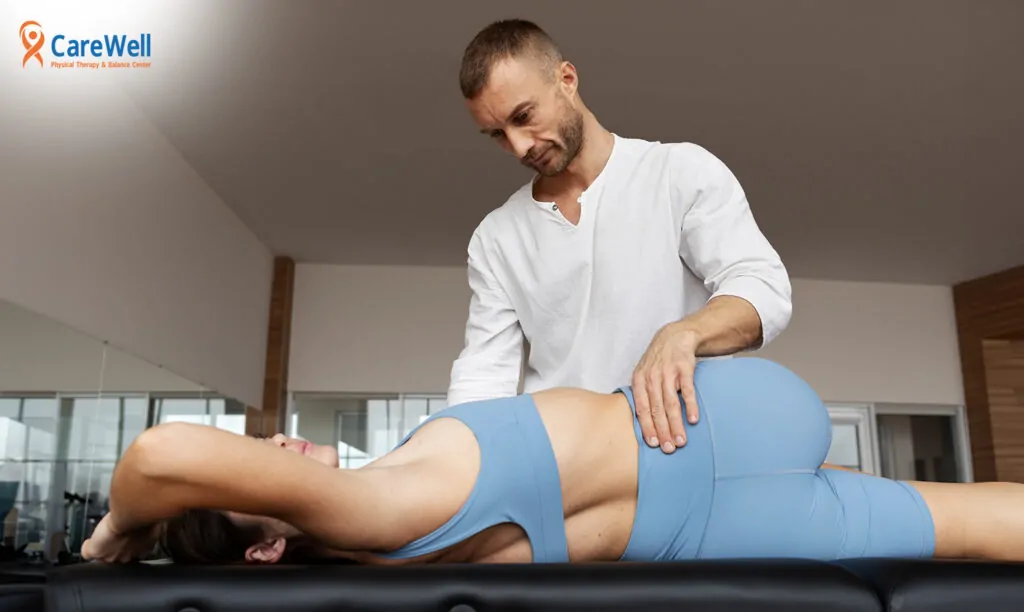Total Motion Release: What You Need to Know
Home > Total Motion Release: What You Need to Know
Recent Blogs
Dizziness Physical Therapy: A Path to Balance and Recovery
How Geriatric Physical Therapy in Tampa Can Help You

Total Motion Release: What You Need to Know
Total Motion Release (TMR) Therapy is revolutionising the way we approach pain relief and mobility enhancement. If you’re seeking a cutting-edge solution for your physical discomfort or restricted movement, Total Motion Release Therapy in Tampa offers a remarkable approach. This innovative therapy focuses on the principle that by addressing and releasing restrictions in one part of the body, you can achieve significant improvement in other areas. It’s not just about treating symptoms; it’s about restoring overall balance and function, empowering you to live a more active and pain-free life.
What is Total Motion Release Therapy
Total Motion Release (TMR) allows physical therapists to closely monitor patients’ progress and determine the most effective exercises based on empirical evidence. The process begins by identifying the main issue of the session and comparing the FAB5 movements between the two sides of the body, prioritising them based on their impact. Next, specific exercises designed to balance both sides of the body are performed, involving sustained positions and repetitions, with each step carefully documented for future evaluation and adjustments. Unlike traditional methods that focus on directly strengthening the weaker side, TMR takes a counterintuitive approach. It functions on the principle that the body is a connected system, where pain or mobility issues in one place may be due to an imbalance elsewhere.
TMR is an extreme, patient-focused method developed to address a broad spectrum of musculoskeletal problems, ranging from immobility and joint mobility restrictions to muscle weakness. It actually eases conditions often associated with:
- Neck and back pain
- Tendonitis
- Muscle strains
- Degenerative discs
- Ligament sprains
- Arthritis
What happens next?
Once the PT decides if TMR will be suitable for a patient, a sequence of detailed exercises can be used to influence pain anywhere in the body. One of these exercises is an easy trunk twist. The therapist and patient will decide which way is more comfortable to twist, and then the patient will meet a number of reps and set to that side, then retest the painful motion. The trunk twist can potentially be used to treat any part of the body. At the end of the session, the therapist can give the patient a trunk twist and perform any different exercises that they have discovered to decrease the patient’s pain, such as exercises to perform at home.
Benefits of total motion release
- One of the main benefits of TMR over traditional therapy methods is that it guides you on how to improve yourself, no matter where the pain is.
- This therapy looks at activity patterns to determine where restrictions are, and it uses reasonable movement patterns to enhance faulty ones. The bottom line is that you’re only utilising comfortable motions instead of painful ones.
- No equipment is required. You can utilise the motion again and again to push the pain out. It puts you in command of the pain. You can understand TMR from a physical therapist or even group sessions. TMR permits the body to re-align and heal naturally. It provides almost quick relief to those nagging pains and discomforts. It’s a lifetime instrument that can be utilised again and again.
- Physical therapists utilise a modified form of TMR tailored to each child. It’s a manageable treatment to bring the box and head into a more appropriate alignment. Therapists also teach parents and caregivers how to utilise this method to help their children. Both the young and the old can help from TMR.
What can I foresee during a TMR treatment session?
The patient is assessed for limitations throughout the body that may be leading to the dysfunction. The right and left sides of the body are assessed for asymmetries and then balanced through precise movements. Many times, people think their pain forms locally, which can be true. However, because the entire body is interconnected, limitations away from the painful area can contribute to the pain as well, and, in many examples, are. Using this whole-body approach, the sites of limitation are released in a very relaxed manner. Although this process requires great participation and measure by the patient, it should always be manageable.
This is what is attractive and different about this process compared to many other traditional physical therapy approaches. If pain is keeping you from appreciating life, Total Motion Release can be very valuable in providing you control over your events.
All-around
Total Motion Release Therapy offers a refreshing and innovative approach to healing by focusing on the body’s innate ability to restore itself. This technique emphasises the importance of addressing the root causes of pain and dysfunction rather than merely alleviating symptoms. Whether you’re dealing with chronic pain, injury recovery, or seeking to enhance your physical performance, this therapy provides a holistic solution that aligns with the body’s inherent wisdom and promotes long-term health.
Leave a reply
Tags : Body Health,Bone,Chiropractic
Share This:
Physical Therapy that's designed entirely around you.
From athletes on the field to weekend warriors in life, being committed to a physical therapy program helps you to keep pushing ahead!


